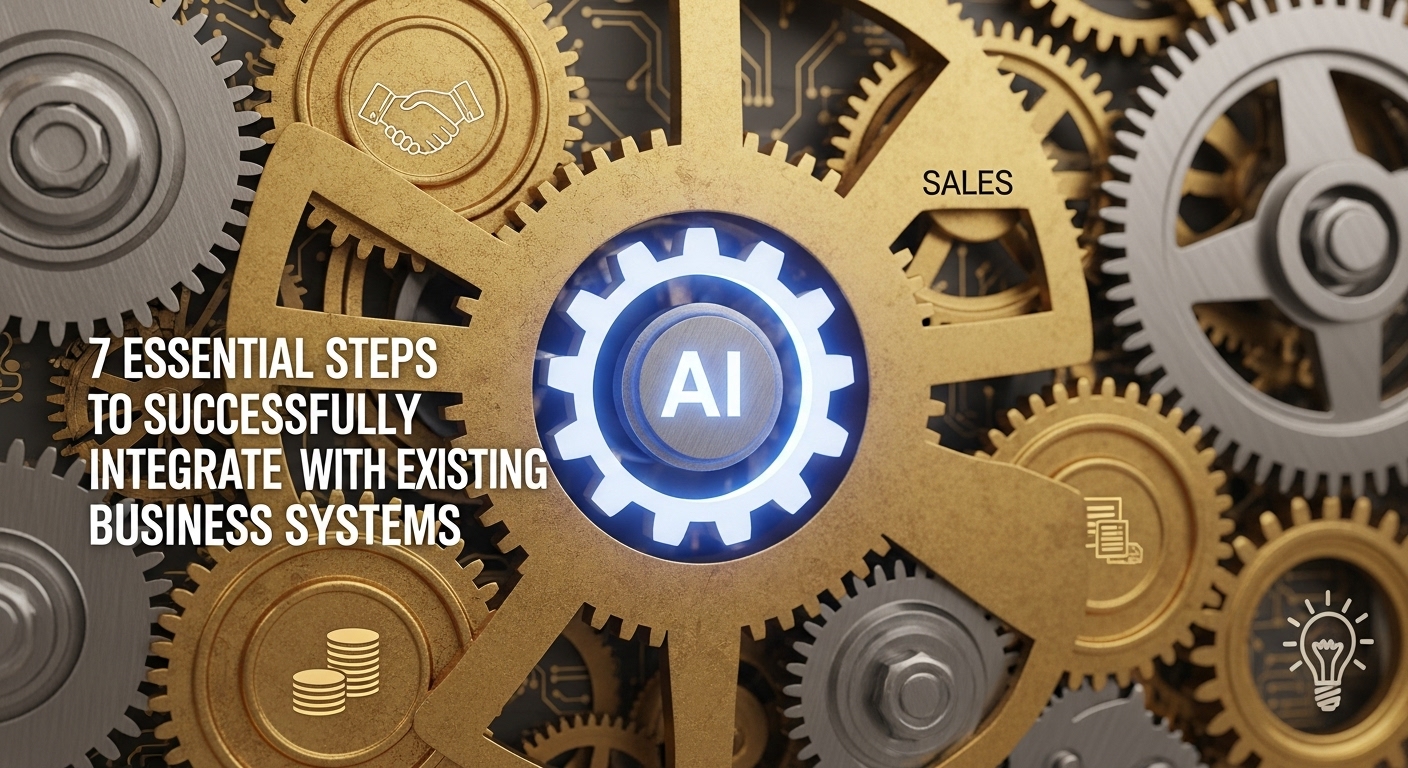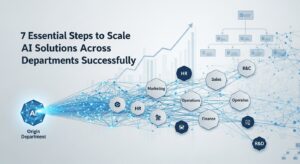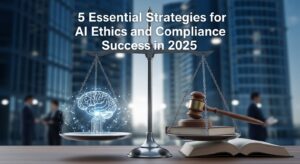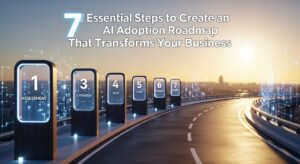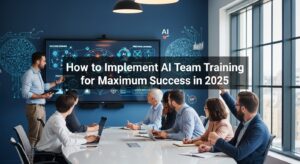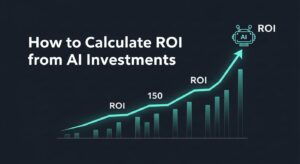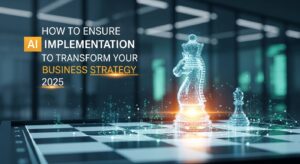Integrating AI with existing business systems represents one of the most transformative opportunities facing organizations today. Yet many business leaders find themselves asking: “How can we harness AI’s potential without disrupting our established workflows?”
This comprehensive guide will walk you through the essential strategies to integrate AI with existing business systems while minimizing risks and maximizing returns on investment. Whether you’re a CTO planning digital transformation or a business owner exploring AI adoption, you’ll discover actionable insights that can revolutionize your operations.
Understanding AI Integration in Business Context
Before diving into implementation strategies, let’s establish what it means to integrate AI with existing business systems. This process involves incorporating artificial intelligence technologies—such as machine learning algorithms, natural language processing, and computer vision—into your current technological infrastructure and business processes.
The goal isn’t to replace your entire system overnight. Instead, successful AI integration creates synergies between human expertise and artificial intelligence capabilities, enhancing productivity while preserving institutional knowledge.
7 Proven Steps to Integrate AI with Existing Business Systems
1. Conduct a Comprehensive System Audit
The foundation of successful AI integration begins with understanding your current infrastructure. Start by mapping out all existing systems, data flows, and integration points.
Key audit components include:
- Current software applications and their APIs
- Data storage systems and formats
- Network architecture and security protocols
- User workflows and pain points
- Regulatory compliance requirements
This audit reveals where AI can add the most value and identifies potential integration challenges before they become roadblocks.
2. Define Clear AI Integration Objectives
Successful projects start with crystal-clear goals. When you integrate AI with existing business systems, you need specific, measurable objectives that align with broader business strategy.
Examples of well-defined AI objectives:
- Reduce customer service response times by 40%
- Automate 60% of invoice processing tasks
- Improve inventory forecasting accuracy by 25%
- Enhance fraud detection rates by 30%
Each objective should include timeline expectations and success metrics that stakeholders can easily understand and track.
3. Start with Pilot Projects
Rather than attempting enterprise-wide transformation immediately, begin with carefully selected pilot projects. These smaller initiatives allow you to integrate AI with existing business systems while minimizing risk and building organizational confidence.
Ideal pilot project characteristics:
- Well-defined scope and boundaries
- Available, clean data sources
- Measurable outcomes
- Supportive stakeholders
- Limited system dependencies
Consider starting with areas like email sorting, basic chatbot functionality, or simple predictive analytics where the impact is visible but the complexity is manageable.
4. Ensure Data Quality and Accessibility
AI systems are only as effective as the data they process. Before integration begins, address data quality issues that could undermine AI performance.
| Data Quality Factor | Common Issues | Solutions |
|---|---|---|
| Completeness | Missing fields, incomplete records | Data validation rules, mandatory field enforcement |
| Accuracy | Incorrect values, outdated information | Regular audits, automated verification processes |
| Consistency | Different formats, conflicting sources | Standardization protocols, data governance policies |
| Accessibility | Siloed systems, restricted access | API development, unified data platforms |
Investing in data infrastructure improvements now pays dividends throughout your AI integration journey.
5. Choose the Right Integration Architecture
The technical approach you select to integrate AI with existing business systems significantly impacts long-term success. Consider these common integration patterns:
- API-Based Integration: Connect AI services through well-defined application programming interfaces. This approach offers flexibility and maintains system separation.
- Microservices Architecture: Deploy AI capabilities as independent microservices that can be consumed by multiple applications. This pattern supports scalability and easier maintenance.
- Event-Driven Integration: Use event streams to trigger AI processing based on business activities. This approach works well for real-time applications like fraud detection.
- Hybrid Approaches: Combine multiple patterns based on specific use cases and existing infrastructure constraints.
6. Implement Robust Monitoring and Governance
AI systems require ongoing oversight to maintain performance and ensure responsible operation. Establish monitoring frameworks before deployment, not after.
Essential monitoring components:
- Model performance metrics
- Data drift detection
- User adoption rates
- System performance impacts
- Compliance adherence
- Security incidents
Create governance policies that address AI ethics, bias detection, and decision transparency. These policies become increasingly important as AI systems handle more critical business functions.
7. Plan for Scalable Growth
Your initial success should lay the foundation for broader AI adoption. When you integrate AI with existing business systems, design with scalability in mind from the beginning.
Scalability considerations:
- Computing resource requirements
- Data storage and processing capacity
- Staff training and change management
- Budget allocation for expansion
- Technology vendor relationships
Common Challenges and Solutions
Legacy System Compatibility
Many organizations struggle with outdated systems that lack modern integration capabilities. Solution: Implement middleware or API gateways that translate between legacy systems and modern AI services.
Data Silos
Information trapped in isolated systems limits AI effectiveness. Solution: Develop data integration platforms that provide unified access to information across organizational boundaries.
Skill Gaps
Teams may lack AI expertise needed for successful integration. Solution: Combine strategic hiring with comprehensive training programs. Consider partnering with AI consultants for knowledge transfer.
Change Resistance
Employees may fear job displacement or workflow disruption. Solution: Emphasize AI as a tool for augmentation rather than replacement. Provide clear communication about benefits and career development opportunities.
Measuring Integration Success
Successful AI integration requires continuous measurement and optimization. Track both technical metrics and business outcomes to ensure your efforts deliver meaningful value.
Technical Metrics:
- System uptime and performance
- Integration response times
- Error rates and resolution times
- Data processing accuracy
Business Metrics:
- Cost savings or revenue increases
- Process efficiency improvements
- Customer satisfaction scores
- Employee productivity gains
Industry-Specific Considerations
Different industries face unique challenges when they integrate AI with existing business systems:
- Healthcare: HIPAA compliance, patient safety protocols, and integration with electronic health records require specialized approaches.
- Financial Services: Regulatory requirements, fraud prevention, and risk management considerations shape AI integration strategies.
- Manufacturing: Industrial IoT integration, predictive maintenance, and quality control systems require robust, real-time AI capabilities.
- Retail: Inventory management, customer analytics, and supply chain optimization benefit from AI integration but require careful consideration of seasonal variations and market dynamics.
Future-Proofing Your AI Integration
Technology evolves rapidly, and your AI integration strategy should accommodate future developments. Consider emerging trends like:
- Generative AI applications for content creation and customer service
- Edge computing for faster, localized AI processing
- Quantum computing potential for complex optimization problems
- Increased automation capabilities through AI agents
Stay informed about industry developments through resources like the MIT Technology Review, Harvard Business Review’s AI section, and McKinsey’s AI insights.
Conclusion
Successfully integrating AI with existing business systems requires careful planning, strategic thinking, and committed execution. By following the seven steps outlined in this guide, from conducting comprehensive audits to planning for scalable growth—organizations can harness AI’s transformative potential while preserving operational stability.
The key to success lies in starting small, learning quickly, and scaling systematically. Rather than viewing AI integration as a disruptive force, approach it as an evolutionary enhancement that amplifies your existing capabilities.
Remember that AI integration is not a destination but an ongoing journey. As technology advances and business needs evolve, your integration strategy should adapt accordingly. The organizations that thrive will be those that view AI integration as a core competency, continuously refining their approaches based on experience and emerging best practices.
The future belongs to businesses that can seamlessly blend human insight with artificial intelligence capabilities. Start your integration journey today, and position your organization for sustained competitive advantage in an AI-driven marketplace.

